Going to Grande Riviere
On Thursday February 10, 1972, a party of 11 persons was travelling from Arima to Grande Riviere in two cars and a jeep. The purpose of the trip was to buy a donkey for a pet. Upon arriving at Big Bay, the travelers were captivated by the alluring scenery and the clear turquoise waters, prompting them to stop for a refreshing swim. Michael Adbul Malik, his wife and three children, a friend Hazra Habib, Steve Yeates, Stanley Abbott, Adolphus (Sonny) Parmassar, Edward (Junior) Chadee, and Kelly Lourenco came out of the vehicles and headed towards the sea.
While the beach at Big Bay is stunning, it holds hidden dangers for unwary swimmers. Jennifer, one of Malik’s children, and Hazra Habib soon found themselves in difficulties as the strong current pulled them away from the shore. Steve Yeates helped to save Jennifer and put her on a rock with the help of Malik. Yeates then attempted to rescue Hazra but was struck by a wave and went under some rocks. Fishermen tried to reach him with a bamboo rod, but he could not be saved. His body was never found. Hazra drifted out to sea and tried her best to stay above the water. Thankfully, she was rescued about one hour later by a fishing boat, several hundred metres from the shore.
On Saturday February 26, Malik Abdul Malik and four others were charged with the murder of Gale Ann Benson. Malik and two other men were also charged with the murder of Joseph Skerritt. The case became known as the “Lettuce Patch Murders”. It was without a doubt the biggest talking point in Trinidad and Tobago in 1972 because of the international reputation of some of the main characters involved and because of the shock value of the murders.
This article recounts the drive into Toco and along the Paria Main Road to Grande Riviere, offering context for the events of that fateful day in February 1972. It also highlights several scenic locations along the route, capturing the natural beauty that frames this part of Trinidad’s northeastern coast.
Along The Way
Google Map of Northeast Coast of Trinidad
At the most northeasterly point of Trinidad lies the unassuming fishing village of Toco. The Toco Main Road, like a weary traveler, concludes its journey as soon as it enters the village. Here, at the crossroads of existence, you encounter the Galera Road on the right, beckoning with a silent promise. Follow its winding path to the northeastern tip, where the Galera Point Lighthouse stands sentinel against the relentless tides. Once, the Toco “Rock” offered vistas that stirred the soul, a canvas of ocean and sky, but alas, these vistas now elude the grasp of the public.
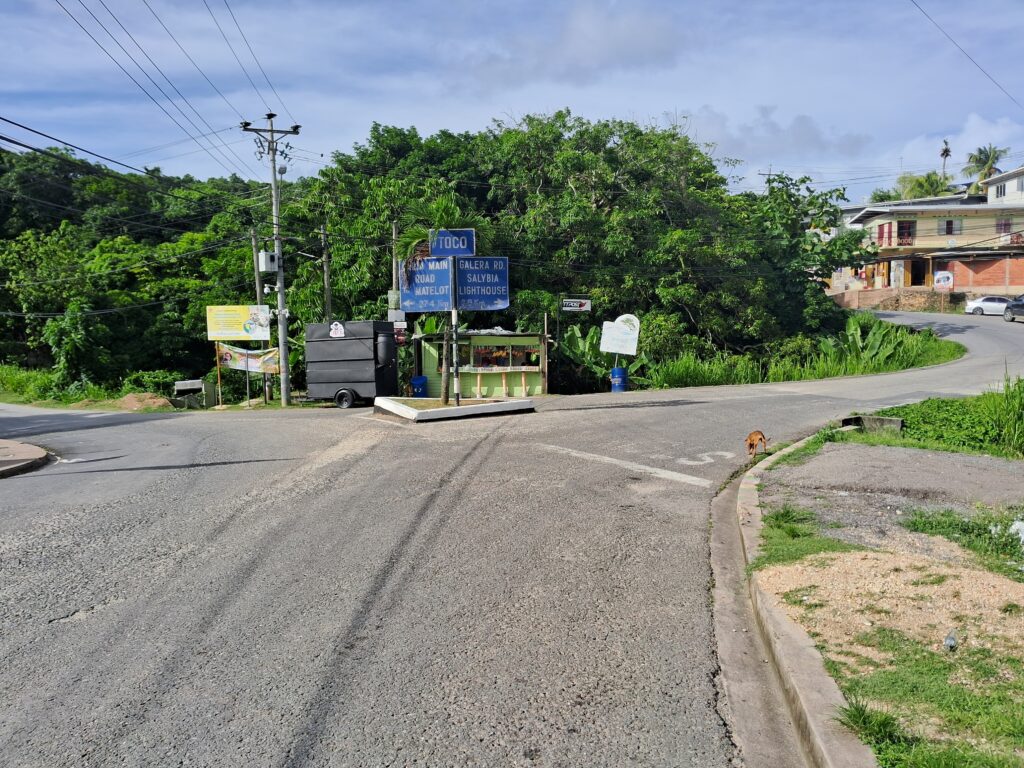
The Toco Main Road Branching Off to Galera Road on the Right and Paria Main Road on the Left
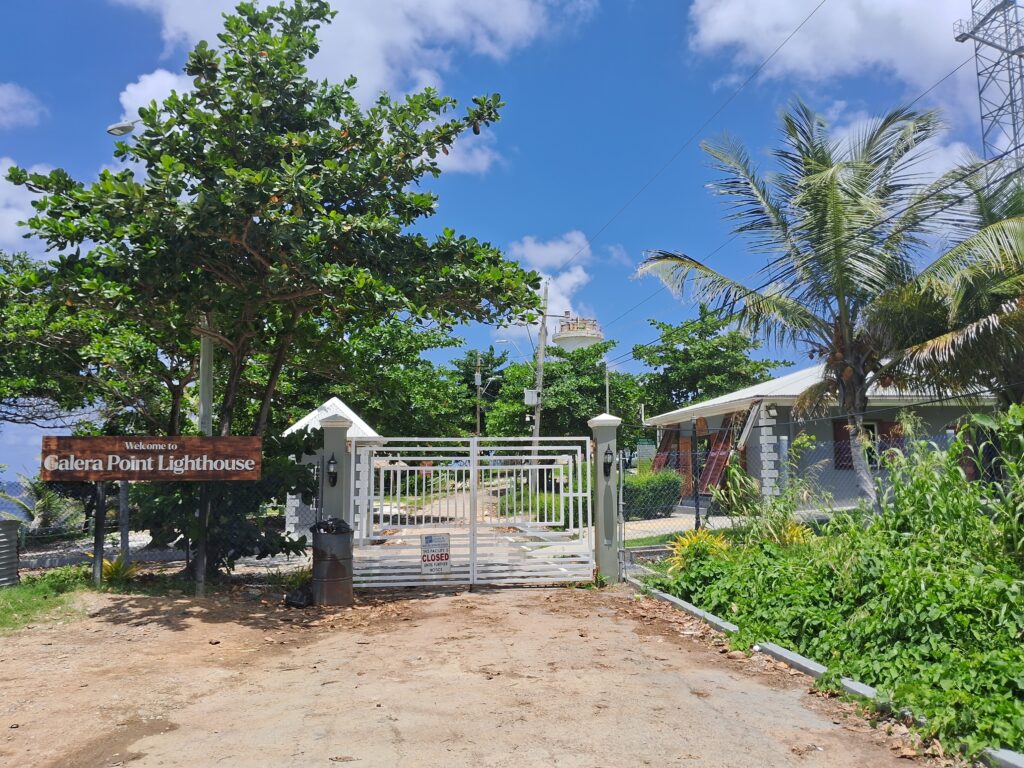
The Galera Point Lighthouse, A National Treasure That Is Unfortunately No Longer Accessible to the Public
As the road unfolds, it reveals secrets: two beaches, Salines and Salybia, where locals and wanderers alike seek solace in the embrace of their remote, salt-kissed sands.
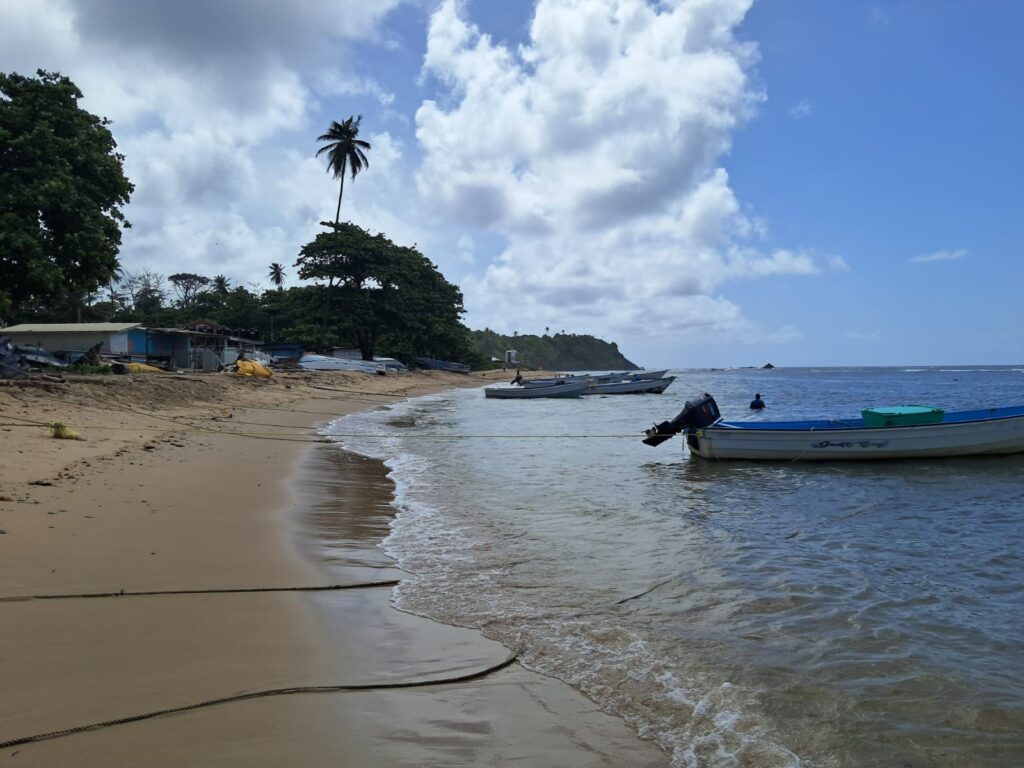
Salybia Beach at Toco
But, the true pilgrimage begins when the Paria Main Road emerges, veering left where the journey of the Toco Main Road ends. Through the heart of Toco village it winds, a whispered tale of forgotten moments. Past the fishing depot near Mission, past the weathered shacks, until it reaches Sans Souci, a name that dances on the tongue like a half-remembered dream.
Sans Souci, where the road meets the sea, and the sea cradles the land. From the village of L’Anse Noire to Sans Souci, the Paria Main Road clings to the coastline, tracing the contours of eternity. Two kilometers of sheer beauty, a ribbon of asphalt suspended between azure heavens and ancient earth. The world’s most scenic coastal drive, they say, and who am I to argue?
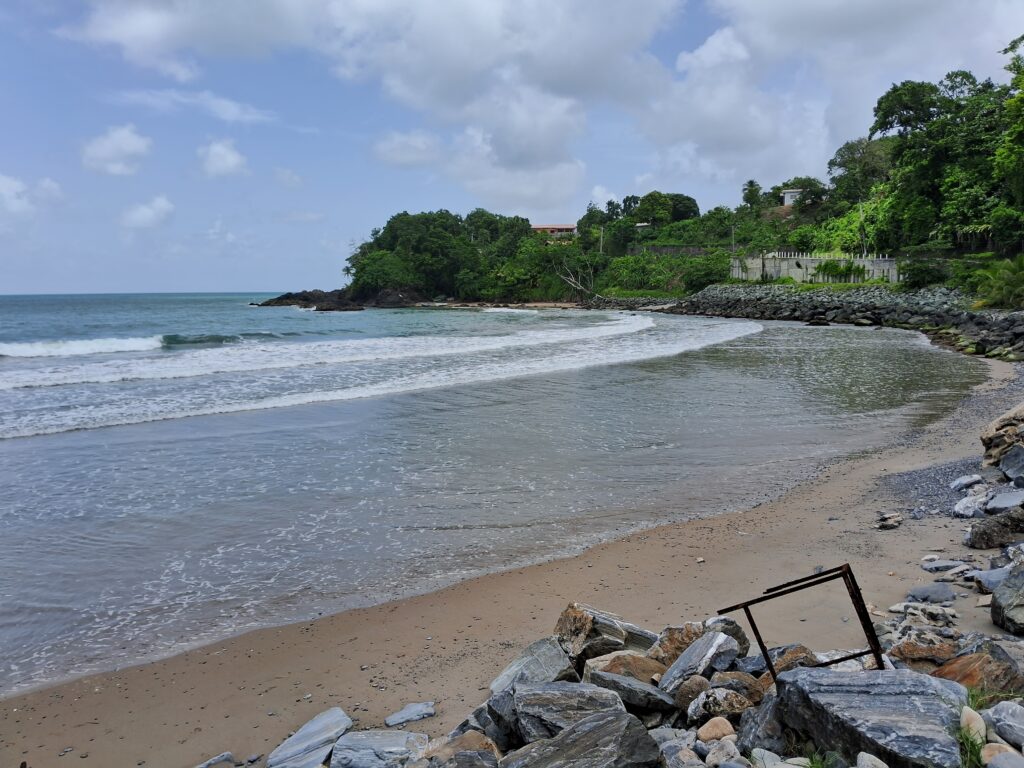
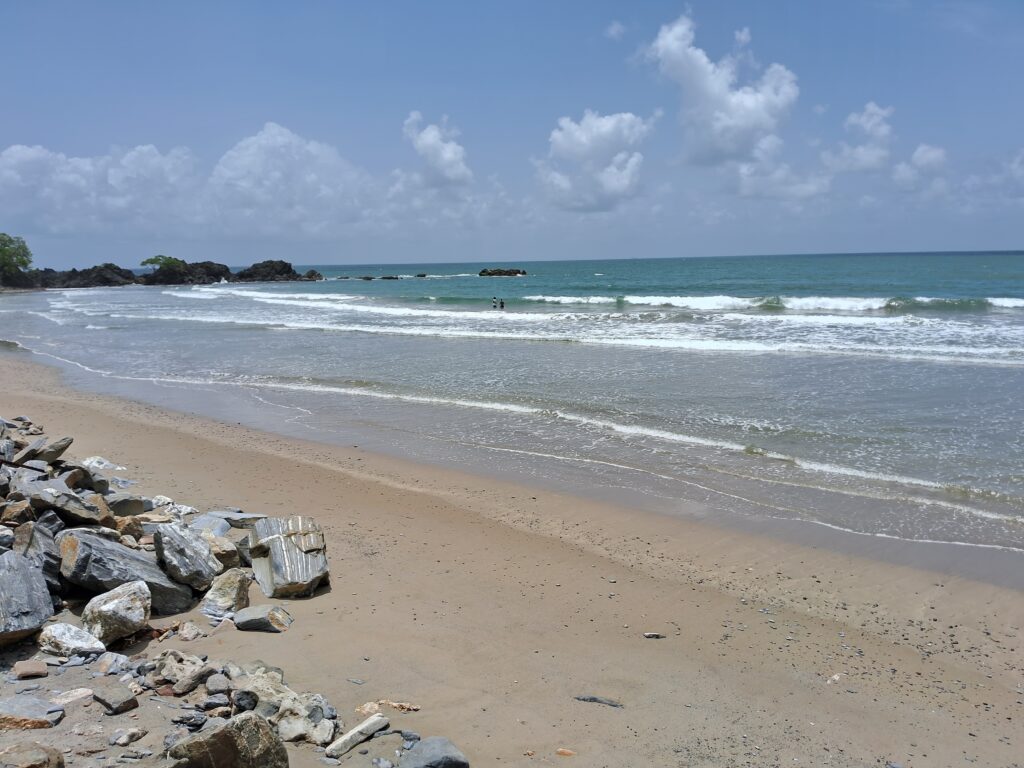
The Alluring Beauty of Sans Souci
After reaching Sans Souci, the Paria Main Road turns southward into the land and then heads in a westerly direction to Grande Riviere until it ends at Matelot. There are no more views of the sea until the winding road reaches Grande Riviere. Grande Riviere—the very name evokes wonder. It is a primary nesting ground for large numbers of leatherback turtles. More than 15,000 pilgrims, both foreign and local, gather each year to witness the miracle of life. Trinidad, our island home, claims the second-largest nesting site for leatherbacks across the globe. The beach at Grande Riviere, a theater of nature’s grandeur, hosts their sacred egg-laying rituals from March to August each year.
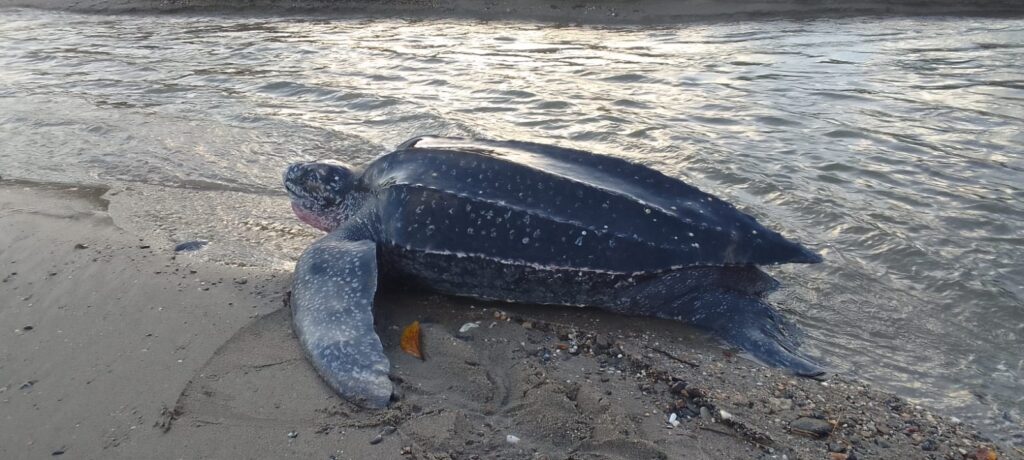
Leatherback Turtle Making Its Way Back to the Ocean After Laying Eggs Overnight
Also in Grande Riviere, the Grande Riviere river meets the sea. Many people come to enjoy sea bathing and river swimming in the same location. Some come seeking solace. Others come looking for a donkey, a relic of bygone days when these steadfast creatures toiled in the sun-drenched fields, carrying burdens too heavy for human shoulders.
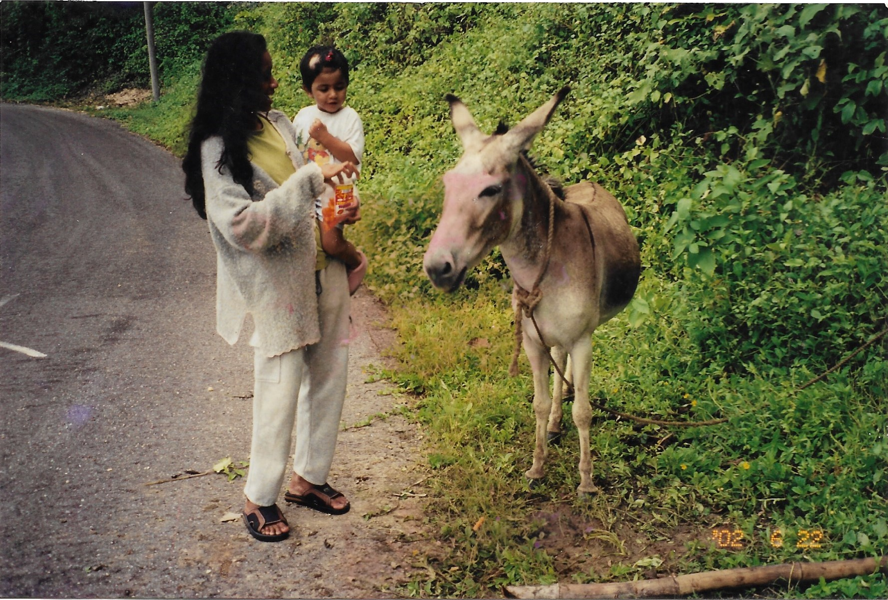
Two Travellers Greet a Donkey Near to Big Bay
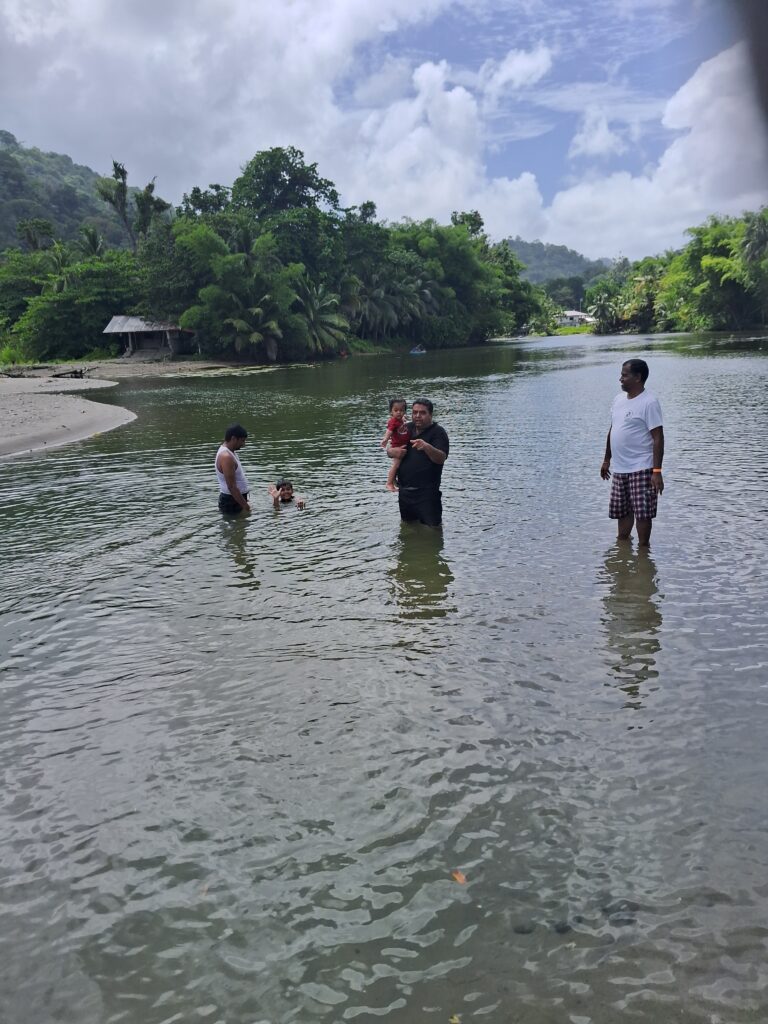
Visitors Bathe at the Mouth of the River at Grande Riviere
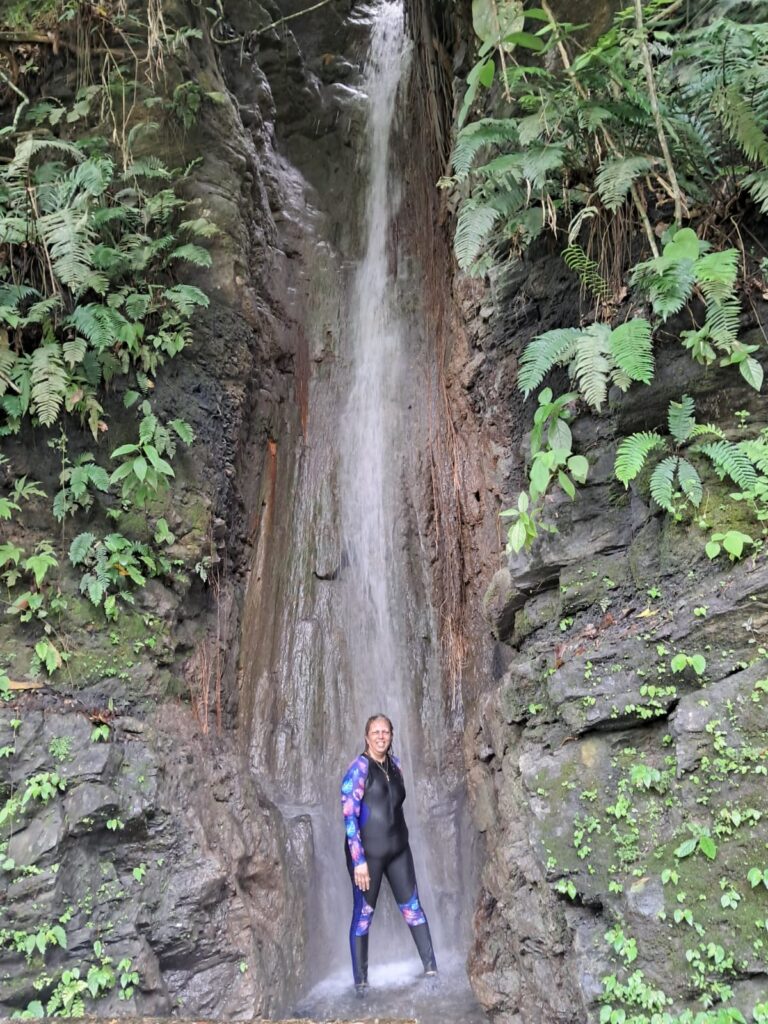
The Road-Side Waterfall Just Before Reaching Grande Riviere is a Refreshing Stop for Some Travellers
If you were going to Grande Riviere, on reaching Big Bay from L’Anse Noir, you have to stop to enjoy the beautiful scenery. A short drive from Big Bay is the Sans Souci beach, which is just as beautiful. The scenery beckons travelers to stop and partake of its natural beauty and enjoy a swim. But, beware, traveler, for Big Bay is a treacherous beauty. The waves crash against the shore, their rhythm both hypnotic and perilous. Waist-deep in water, one’s footing falters on the sea floor carved by unseen hands, deep holes lurking like hungry maws. Each breaker pulls the unwary bather toward a rocky reef, where crashing waves play their final symphony. Bodies vanish, swallowed by the abyss. Local lore whispers of grouper feasting on lost souls, their hunger insatiable.


Magnificent Views of Big Bay
So, choose your path wisely. Bathe in safer havens, Salybia’s gentle embrace or in Toco’s hidden coves where the sea sings lullabies and the sand cradles your weary bones. And, if you should venture to Big Bay, let your eyes feast upon its wild beauty, but guard your steps. For Big Bay, like life itself, offers both wonder and peril, and the sea keeps its secrets close.
Permanand Mohan,
September 2025